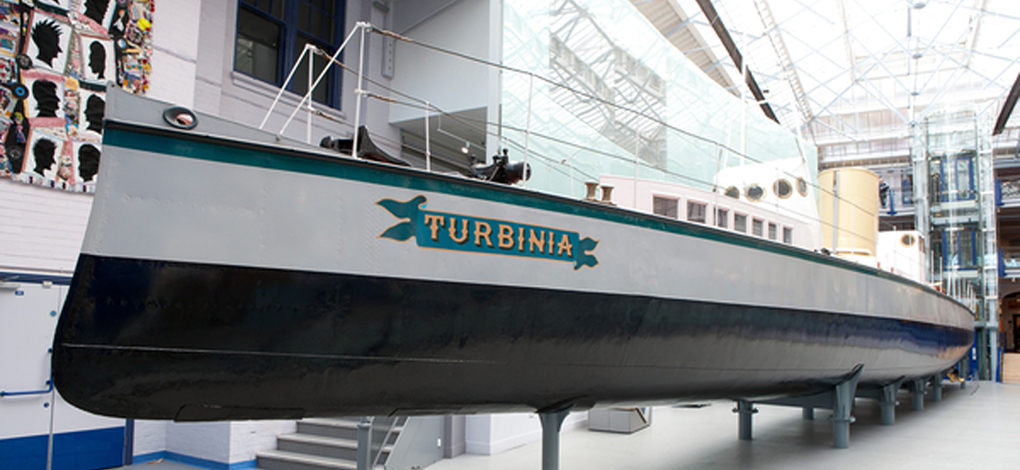Charles Parsons
Charles Algernon Parsons was born on the July 13, 1854 into a wealthy and talented family. His father, the third Earl of Rosse, was president of the Royal Society and a distinguished astronomer. His mother was a pioneer in the field of photography.
.jpg)
Privately tutored, Parsons spent much of his time as a child in his father's workshop listening to the many scientists who frequented his parents' home, Birr Castle, Ireland. At the age of 12 he constructed - with the aid of his brothers - a steam carriage that could travel at speeds of up to 10 miles per hour (16 kph).
After enrolling at Trinity College Dublin, Parsons transferred to Cambridge, where he earned a degree in mathematics.
In 1884 he went to work for Clarke, Chapman, and Company, manufacturers who specialised in building electric dynamos. Realising that a significant amount of energy was being lost between the engine and the dynamo, Parsons set about designing a machine that would directly use the steam's energy.
This would later become known as a Steam Turbine. He was made a fellow of the Royal Society in 1898 and was awarded the Royal Society’s Rumford Medal in 1902.
Parsons became president of the Institute of Marine Engineers between 1905 and 1906 and later president of the British Association from 1919 to 1920. He was knighted in 1911 and given the Order of Merit in 1927. He would later die in Kingston, Jamaica on February 11, 1931.
Turbines
Parsons invented the modern steam turbine in 1884. Parson's steam turbines operated on the principle that mechanical energy can be derived from the movement of a fluid or gas.
It consisted of a rotor in which several wheels were attached to a shaft. Steam entered and expanded, causing the shaft wheels to rotate. Stationary blades forced the steam against the rotating blades, maximising energy efficiency. The steam then continued until it encountered another set of turbine blades, designed to work at a slightly lower pressure.
His turbine achieved a speed of 18,000 revolutions per minute (rpm), compared to a previous maximum of 1,500 rpm. Parsons left Clark, Chapman, and Company in 1889 to form his own company.
Turbinia

Charles Parsons, having foresaw the potential of his steam turbines to power ships, set up the Parsons Marine Steam Turbine Company in 1893. Parsons had Turbinia, an experimental vessel, built from a light steel by the firm of Brown and Hood, based at Wallsend on Tyne, in the North East.
Whilst Parsons created Turbinia, the math was too complex for him. He asked for the help of his friend George Johnstone Stoney’s daughter. Edith Anne Stoney was an accomplished mathematician and completed the equations for him. Without the help of this uncredited woman Turbinia would have remained an idea.
The Admiralty was kept informed of developments and Turbinia was first launched on the August 2, 1894. Despite the success of the turbine engine, initial trials with one propeller were disappointing.
After discovering the problem of cavitation (the formation of bubbles in a liquid caused by movement, typically from a propeller) he constructed the first cavitation tunnel. Parsons' research led to him fitting three axial-flow turbines to three shafts, each shaft in turn driving three propellers, giving a total of nine propellers.
Charles Parsons' ship turned up unannounced at the Navy Review for Queen Victoria's Diamond Jubilee at Spithead, on the June 26, 1897. The Prince of Wales, Lords of the Admiralty, and foreign dignitaries were all witness to the spectacle it created. As an audacious publicity stunt, Turbinia which was noticeably faster than any ship at the time, raced between the two lines of navy ships.
It steamed up and down in front of the onlookers while easily evading a Navy picket boat that tried to pursue her, almost swamping it with her wake. Parsons soon saw his steam turbine widely used for both commercial and military ships. This was due to its ability to provide high speeds with less vibration.
He will however, forever be known for developing the most convenient, useful, and efficient means of converting power into motion with his steam turbine.
